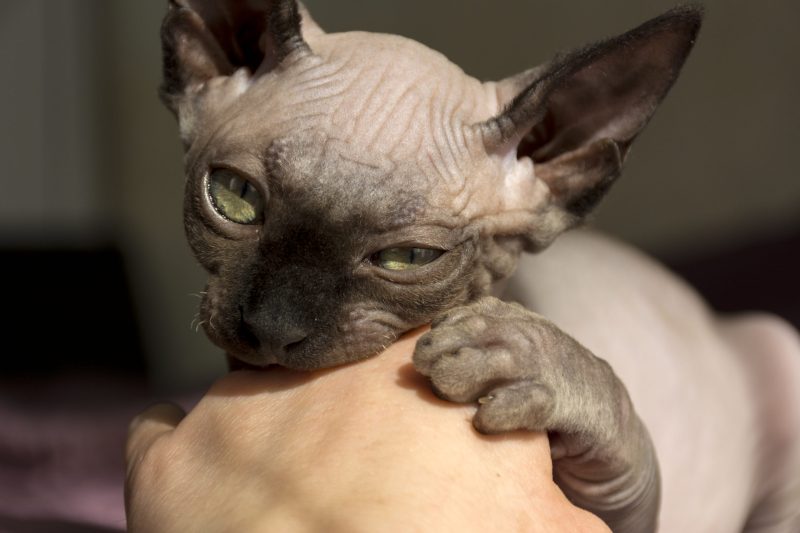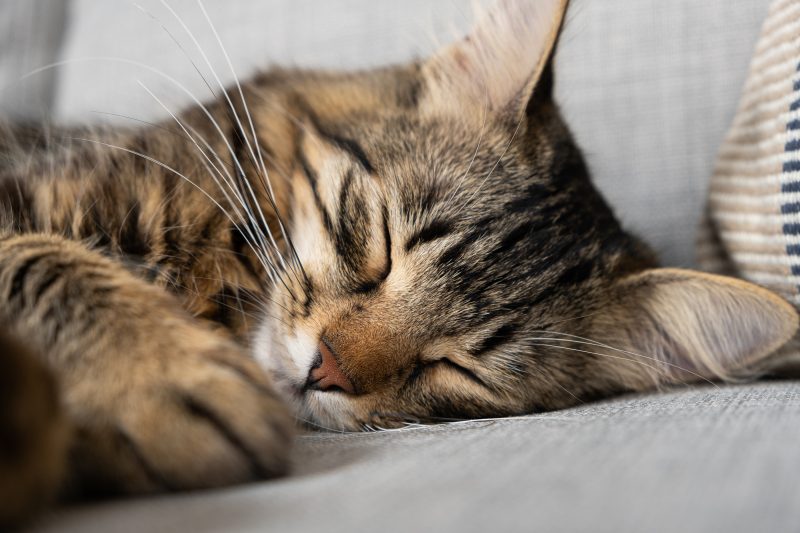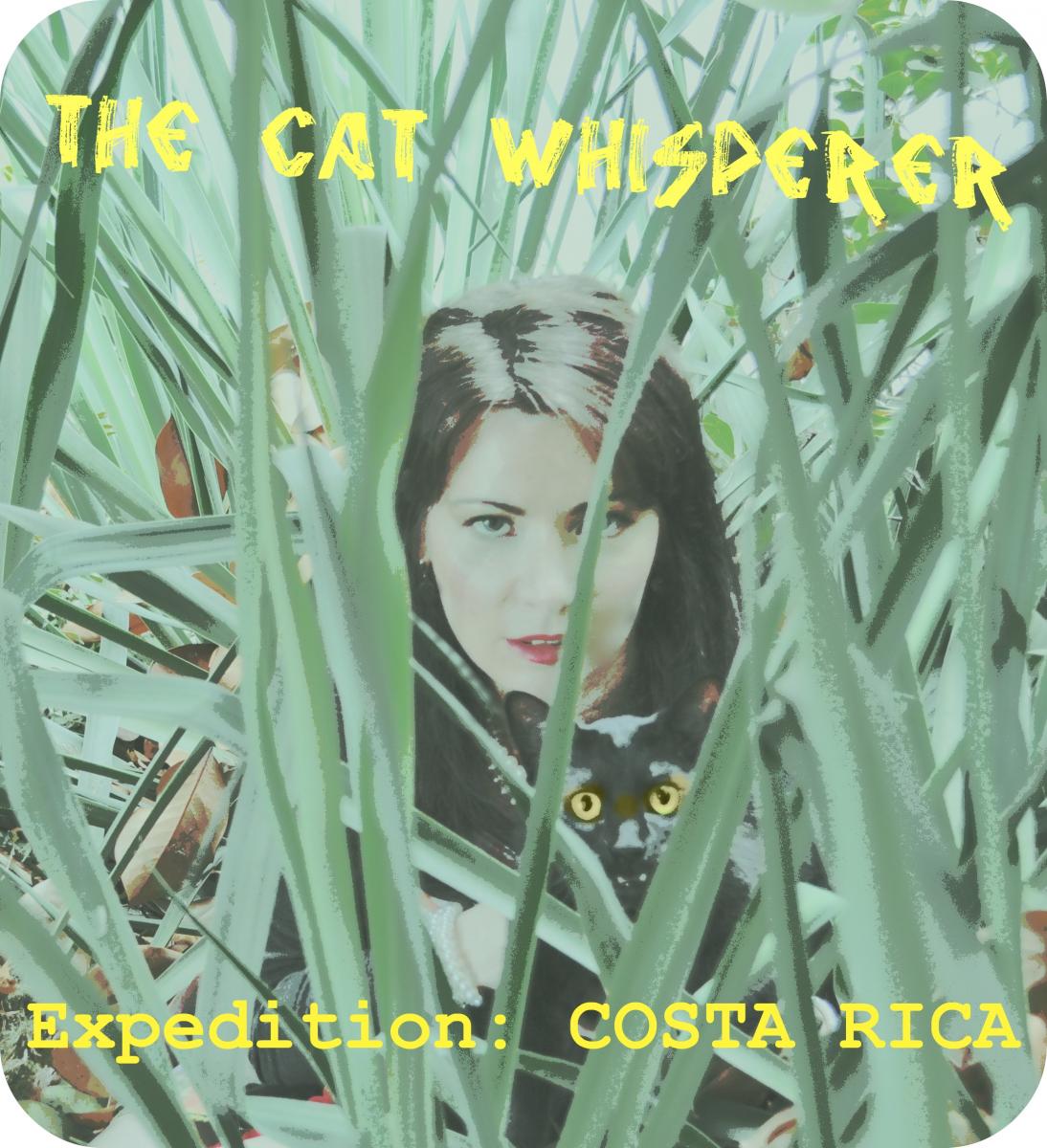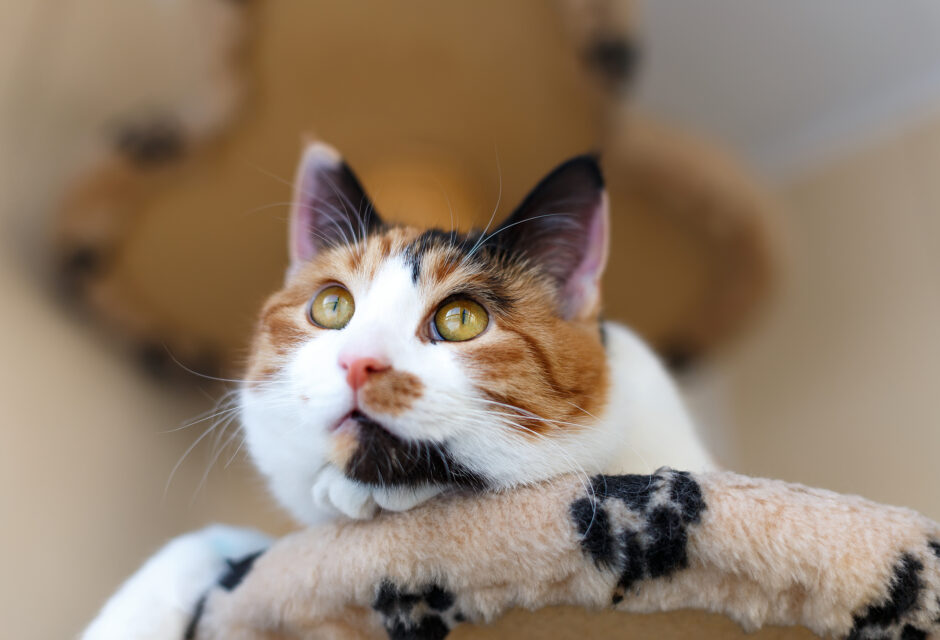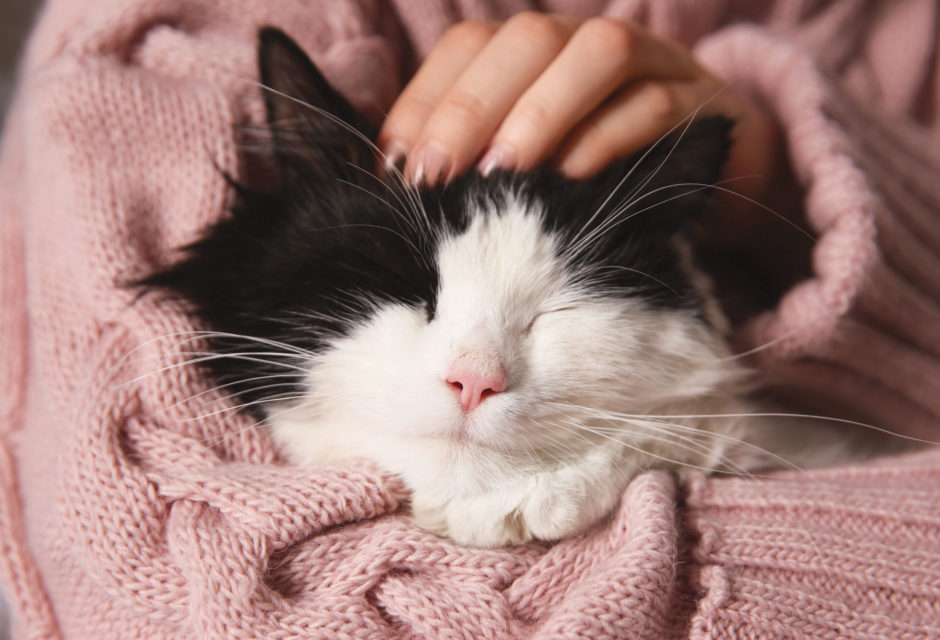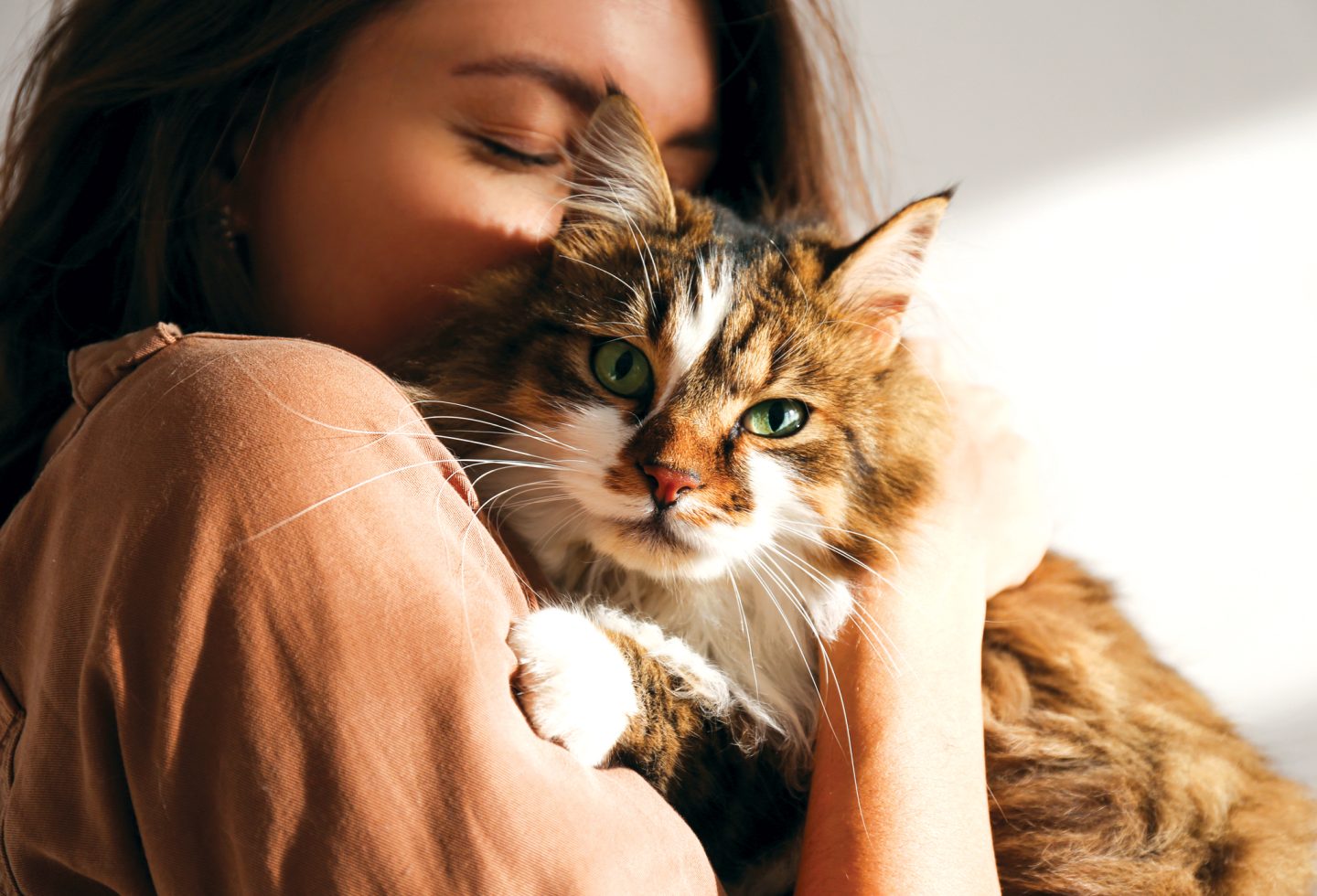
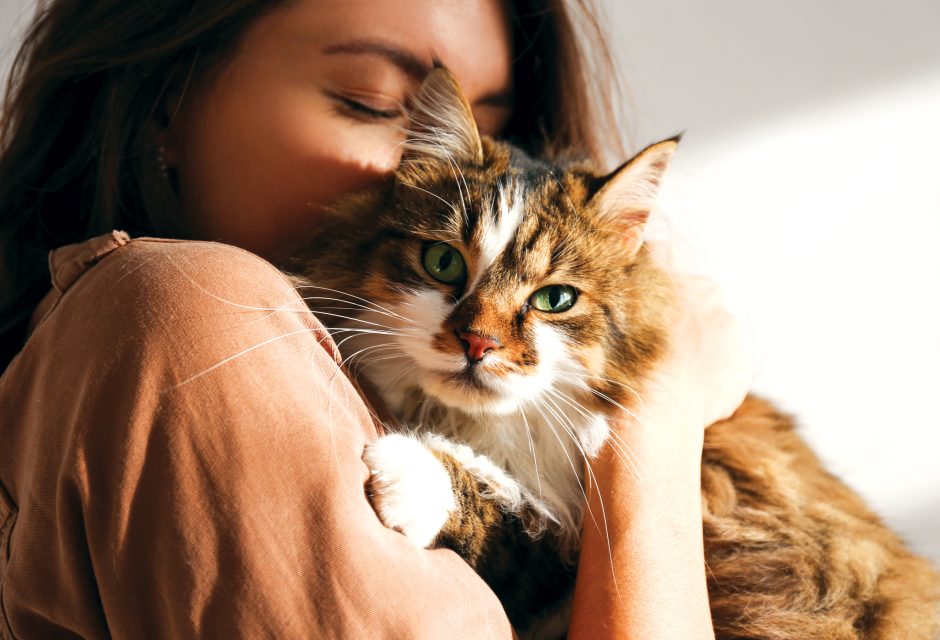
Signs Your Cat Thinks You’re Their Mom or Dad
Does your cat see you as a caretaker, mate, or affiliate? Read on to find out which one you are!
By: Mieshelle Nagelschneider, Cat Behaviourist, host of the TV show My Cat From Hell, and author of the cat behaviour science book, The Cat Whisperer
Last Updated:
There’s a good chance that if you’re reading this article, you love cats. And as a cat lover, you’ve likely wondered what your cat thinks of you. Can a cat love a human? With all the nurturing and care we give our cats, is it possible they think of us as their mom or dad?
Cats, far from being loners, often engage in intricate social behaviours with their feline companions. They form colonies where they establish hierarchies, share resources, and even engage in communal activities such as grooming. This social structure, deeply rooted in their evolutionary history, highlights their inclination toward a rich social life. Cats, it seems, have evolved not only to coexist but to thrive in the company of other cats and humans alike. Understanding the nuances of these social connections adds depth to the relationship between humans and their feline friends.
Does your cat consider you a Caretaker, Mate, or Preferred Affiliate? Read on to unpack each role and determine what your cat thinks of you!
We know that cats instinctively develop specific roles within their cat communities. These roles can also be developed between cats and other species and very easily with humans. Cats don’t just see us as mere roommates. Oh no, they’ve categorized us into distinct roles, as they do with their feline companions.
Role #1: The Caretaker, aka Mom or Dad
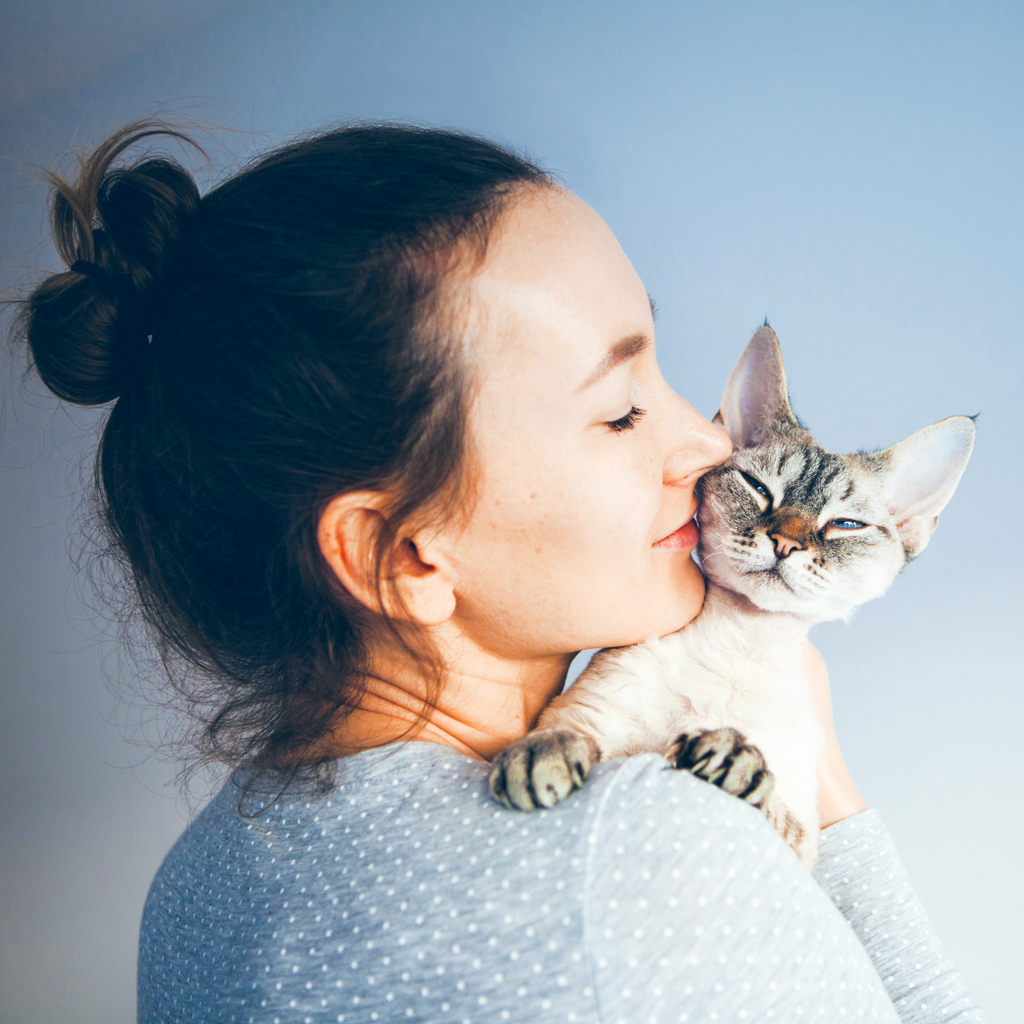
Veera/Shutterstock
First up, we have the caretaker, or in human terms, the mom (or dad for you cat dads out there). The caretaker is the provider of sustenance, the keeper of the elusive red dot/feather wanded toys, and the designated cleaner of litter boxes. To a cat, the caretaker is more than just a vending machine for cat treats; they’re the feline equivalent of a benevolent parent, a confidant in the complex world of whisker twitches and tail flicks.
Role #2: Mates
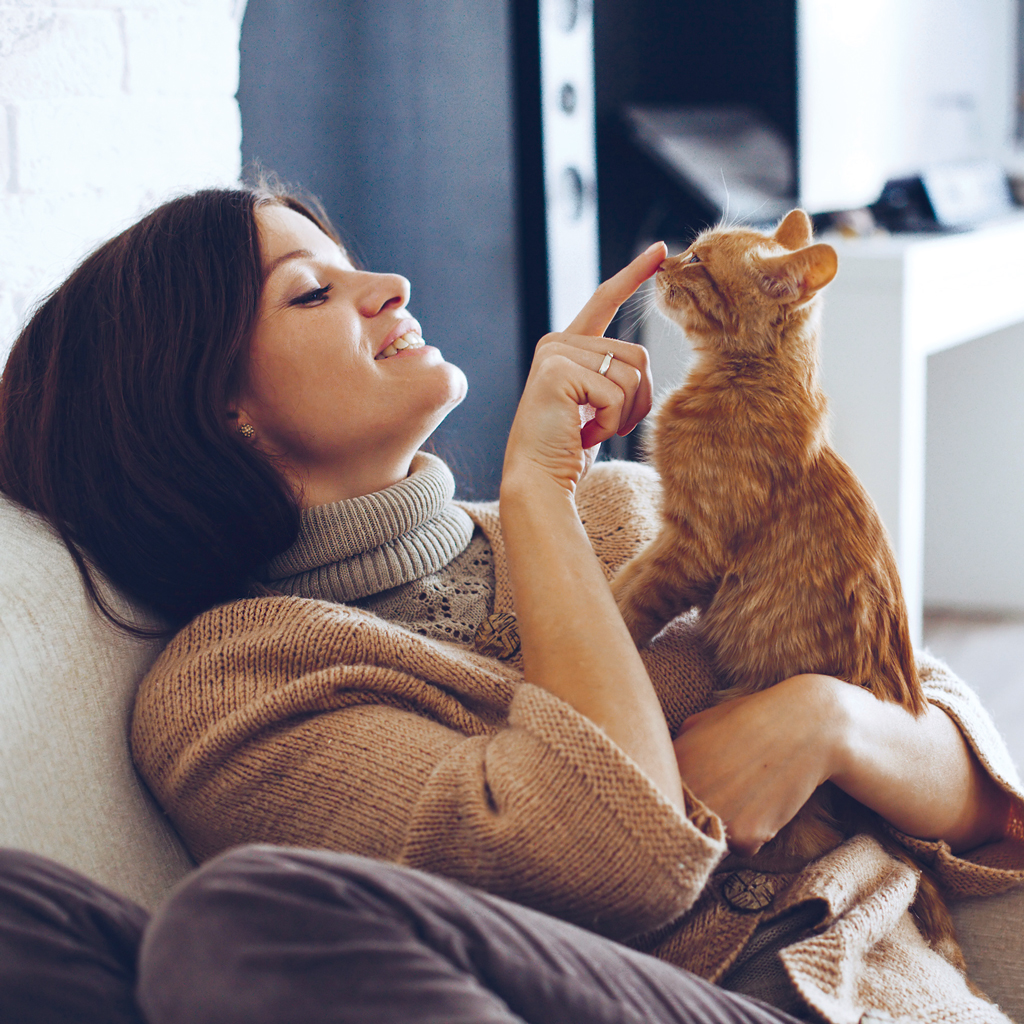
Alena Ozerova/Shutterstock
But wait, there’s more. Cats, in their infinite wisdom, also see humans as potential mates. Now, before you conjure images of feline romance, let’s clarify—it’s not about moonlit dinners or sharing a Churu squeeze-up treat. No, it’s a desire for companionship, a craving for the warmth of connection. Cats seek not just the provider but a partner in crime, a sidekick in the grand adventure of knocking things off shelves and chasing imaginary foes. It’s this depth of emotional connection cats can forge, seeking not just care and affection from us but also companionship akin to a familial bond.
“In the last decade, research on many animals has shown they lead rich emotional lives. Beyond mere fear and anxiety, they are capable of grieving the loss of their humans or animal companions; they can become depressed; they can experience anticipation and pleasure. They can also experience dramatic emotional responses to changes in their environment. Cat share with humans the same neurochemistry that allows us to feel.”—Excerpt from Mieshelle Nagelschneider’s cat behaviour science book, The Cat Whisperer, Random House Publishing.
Role #3: Preferred Affiliate
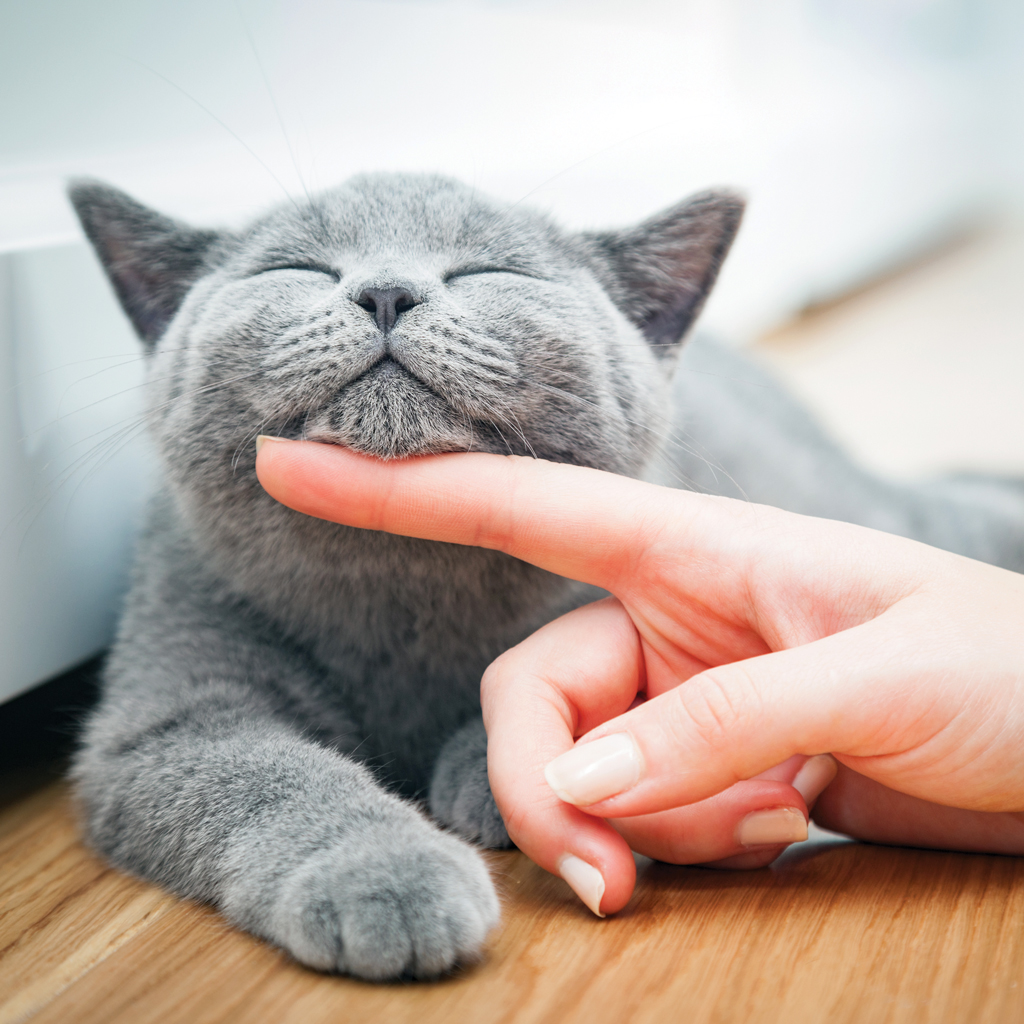
PHOTOCREO Michal Bednarek/Shutterstock
Then, there’s the category of preferred affiliate or friend. Cats, the discerning socialites that they are, make a distinction between mere acquaintances and true-blue friends. This affiliate distinction goes beyond the basic aspects of caretaking and mating, encompassing a genuine fondness for human companionship. Cats display affection, seek attention, and engage in playful behaviours, mirroring the dynamics of cat-to-cat friendship. Preferred Affiliates may be the humans who get the privilege of belly rubs, the chosen recipients of the elusive purr serenade, and the confidantes privy to the sacred art of play fighting—or with humans, mock play fighting with wand-toy play or hiding around the corner so their cat can pretend to stalk them. Being deemed a friend in the feline world is an honour akin to receiving a golden ticket to Willy Wonka’s chocolate factory—exclusive and coveted.
Is One Role Better Than Another?
Although cats may initially share a special bond with their parents, like other species, they eventually depart from the nest, entering new relationships characterized by different levels of interaction. The most prominent social bonds, arguably, tend to revolve around mates and preferred affiliates.
As we unravel the layers of feline social dynamics, the complexities of their interactions with both cats and humans become evident. Every tail flick and purr carries deeper significance. Cats, it seems, are not the solitary figures we often imagine; instead, they have evolved to embrace a multifaceted social existence that enriches the bonds they form with both their feline peers and their human companions. Understanding these intricate layers offers a glimpse into the world of feline relationships and what they might actually think of us humans.
So, next time you catch your cat orchestrating a play-fighting event in the evening or giving you the slow blink of approval, remember—you’re not just a bystander. It’s very likely you’re an integral part of the feline ensemble, playing your role within the confines of your home.
* Cat Behaviourist Mieshelle Nagelschneider is the founder of The Cat Behavior Clinic, in practice for 28 years, and author of the cat behaviour science book, The Cat Whisperer from Random House Publishing. You can schedule a Zoom cat behaviour appointment with Mieshelle at thecatbehaviorclinic.com.
This article originally appeared in the award-winning Modern Cat magazine. Subscribe today!
Join the newsletter and never miss out on cat content again!
"*" indicates required fields
By clicking the arrow, you agree to our web Terms of Use and Privacy & Cookie Policy. Easy unsubscribe links are provided in every email.





